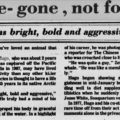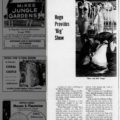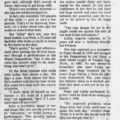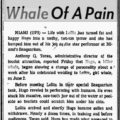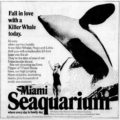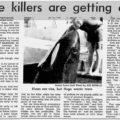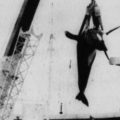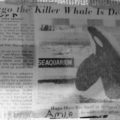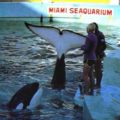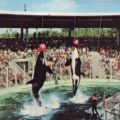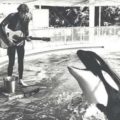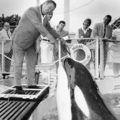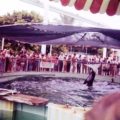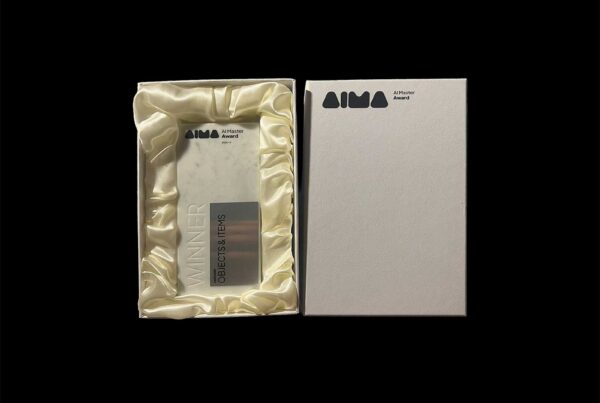Remembering Hugo
Hugo was captured in Vaughn Bay in Washington on February 20, 1968; he was kept in a holding pen in Seattle before being transferred to the Miami Seaquarium on May 16, 1968. A female orca was caught alongside him. Named Lupa, she was sent to the New York Aquarium in Coney Island where she died seven months later from pneumonia.
For the first two years of his life at the Miami Seaquarium, Hugo was held in a tank called the ‘Celebrity Bowl’; today, the tank houses manatees.
Ric O’Barry, founder of the Dolphin Project, worked at the Miami Seaquairum, he objected to the tank’s tiny size. “When [Seaquarium manager Burton Clark] showed me Hugo, I shook my head in disbelief…’He’s longer than the tank is deep,’” he said.
Hugo was thirteen feet long and the tank was only 12 feet deep. “He’s just a baby. He’ll grow twice this big. Leave him in here, Mr. Clark, and you’ll have the Humane Society down on your ears.”


Clark said they were building a new tank and showed O’Barry the site. “I looked at it in dismay. ‘This is it?’” The current tank was completed in 1970. It is the one the park still uses today and is the smallest orca tank in North America.
Clark asked O’Barry to take care of Hugo and ‘keep him happy’ while the new tank was under construction. So O’Barry became Hugo’s caretaker, and though he was warned that killer whales were dangerous, O’Barry found that Hugo was a sensitive, intelligent creature and wasn’t scared of him.
“‘Hugo!’ I said with a grin. ‘You’re nothing but a big, wonderful dolphin!”
Hugo and O’Barry came to trust each other. “He allowed me to ride on his great back and, to amuse the tourists, I rode around on his back playing flute and guitar. Hugo loved music.”


O’Barry, wanting to protect Hugo and learn about orcas, struggled with the situation.
“Hugo was eating 100 pounds of fish a day, and the bigger he got, the smaller his little whale bowl seemed. Nobody was more conscious of this than I, but every tourist who came through, thousands of them every day, pointed it out to me as if it were a great discovery.” The new tank construction had constant delays and slow progress. Even once completed, you can see how small it is since they haven’t expanded it. He was questioned by tourists about Hugo’s situation, and O’Barry in turn questioned his supervisors about it. But they were dismissive and nothing changed. “I left, this time for good.”
The Seaquarium had sought to capitalize on Hugo by splashing an artist’s conception of him on billboards along the highway leading south: Hugo the killer whale thrashing through the frothy water, with an angry countenance and huge, bloody teeth. – Ric O’Barry


On September 24, 1970, a female orca, later named Lolita, arrived at the Miami Seaquarium and was kept separate from Hugo as there was a concern they would fight. They were housed together on June 2, 1971, after being heard calling out to each other across the park. Unbeknownst to the Miami Seaquarium, Hugo and Lolita were captured from the Southern Resident orca population and shared similar dialects, allowing them to communicate.
The pair eventually mated, much to the delight of Seaquarium employees. According to the St. Petersburg Times, “although Lolita was pregnant a few times, she never delivered a live offspring.” It is believed she gave birth on May 16th, 1973, to a stillborn calf, but other dates are unknown. “Sex Drive Stops Whale Show”. The Palm Beach Post. Dec. 4, 1977.
Behavioural Incidents
Hugo had a history of aggression at the Seaquarium. In late 1970, a trainer stuck his head in Hugo’s mouth and Hugo bit down on him. The trainer had to get ten stitches in his head and neck. Trainer Mike Jax stated in 1972 that Hugo had hurt people by bumping with his head when he was annoyed. Multiple other trainers stated that Hugo had attacked and acted aggressively towards people.
Joel Simka drew attention to the ongoing plight of captive orcas by posting a picture of Hugo.
The image shows a man who had become trapped in Hugo’s pool being helped out by a couple of trainers, including Scott Amsel (on the right). “Scott and his wife Kathy, who was a dolphin trainer left Miami Seaquarium shortly after this incident, realizing quickly that the relationships between these captives and their human oppressors is not all happiness and roses. This is the true nature of my childhood friend, Hugo the killer whale. What I did not know about Hugo, at the time, was that he was at one point a wild animal (a gentle Southern Resident), captured, taken from the Salish sea and coincidentally, turned psychotic.”

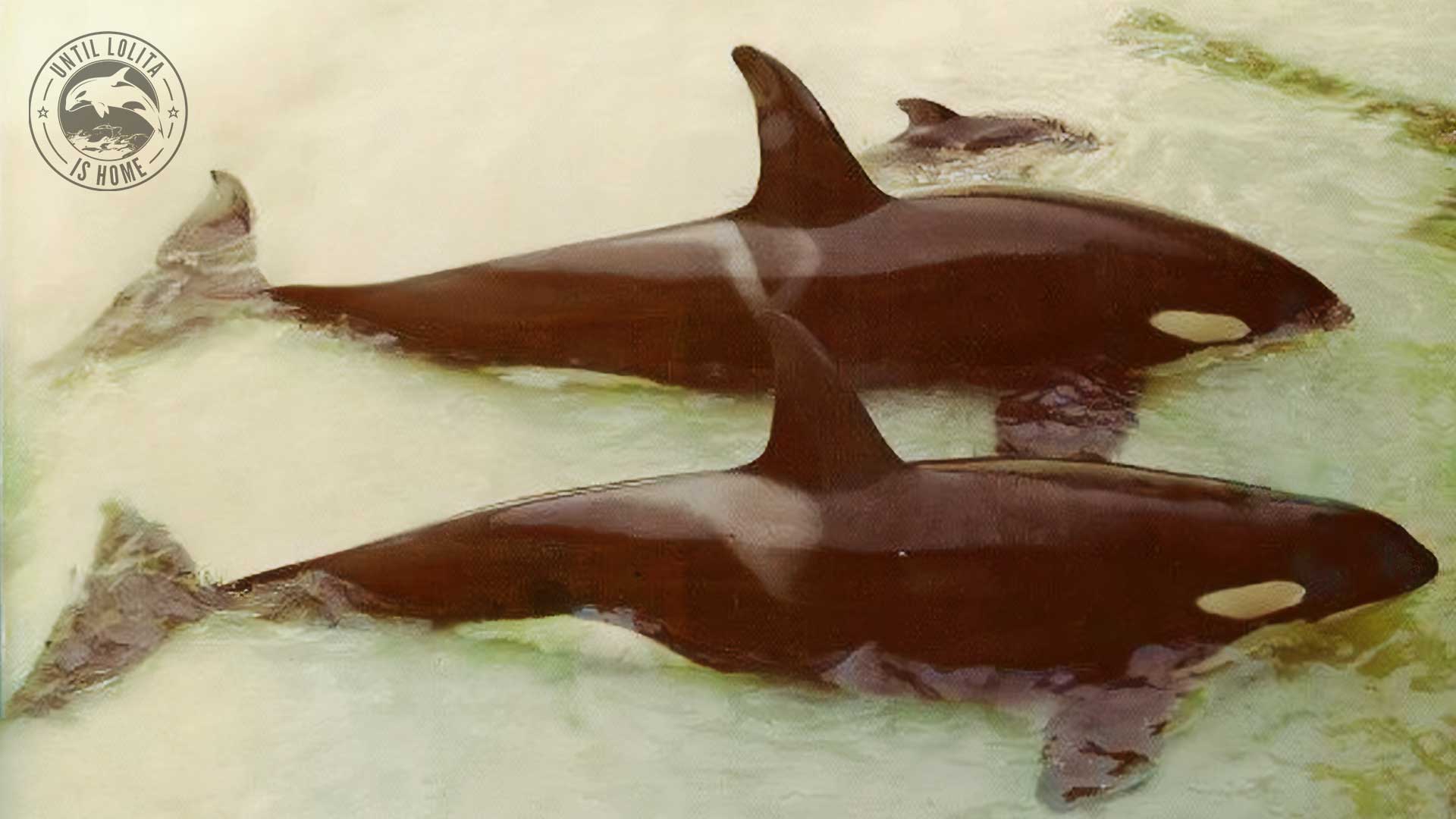

Hugo repeatedly injured himself while in captivity. At one point he severed the tip of his rostrum and a veterinarian had to sew it back on. According to a newspaper article at the time of the incident, “His powerful drive shattered the acrylic plastic bubble, and knocked a five-inch hole in it. And a piece of jagged plastic severed Hugo’s nose.” – A Nose Job for The Killer Whale,”, July 7, 1971. The same article speculated that an incident like this might happen again. And it did. Hugo rammed his head into the tank multiple times throughout his twelve years in captivity.
Death
In January 1980, Hugo started acting sluggishly; he died on March 4th, two months later. The cause of death was a brain aneurysm. Before his death, Hugo had been “thrashing” and ramming his head into the tank wall, which some people believe contributed to his death. Many refer to Hugo’s death as a suicide.
The Miami Seaquarium lifted his body from the tank and disposed of him at an undisclosed location believed to be the Dade County Landfill. They did not commemorate his life or death; it was as if he had never existed. Even today, this is the only mention of him on their website: “Miami Seaquarium welcomes the arrival of Hugo, its First Killer Whale to the park.”
Lolita has been alone at the Miami Seaquarium ever since.
“After the death of Hugo, Toki would briefly surface to catch a breath, then would return to the bottom to continue her long bouts of submerged-floating.”
Reference
- Lolita: Happy, Gentle, Smart; Weighs 4 Tons
- Miami Seaquarium, orca, Toki, Hugo, origin of Hugo’s name
- A Whale of an Act
- Man Sticks Head in Killer Whale’s Mouth Four Times a Day; He Gets $172 a Week
- Necropsy Report
- Clipped From The Orlando Sentinel
- Lupa loaded onto a truck
- Lupa lowered into the aquarium
- Lupa at the New York Aquarium
- Lupa’s death
- Behavioral & Respiratory Synchronicity in a Pair of Captive Killer Whales


